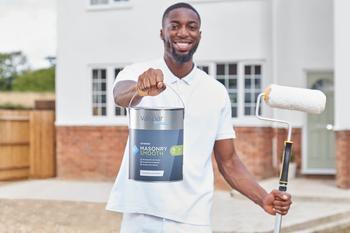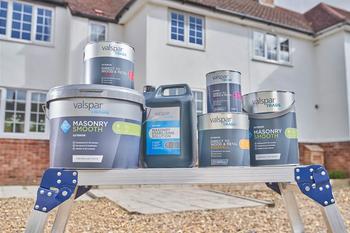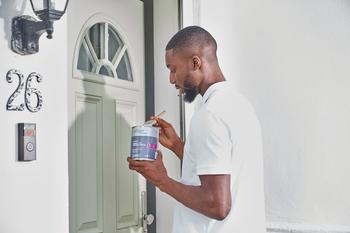*Sponsored content from Valspar Trade.
For professional painters and decorators, battling with the weather can often be a challenge, with certain weather conditions having differing effects on your paint. Steve Cotton, Valspar Trade’s Senior Product Marketing Manager, explores what these effects are and how can you work around them.
How colder temperatures affect paint jobs
Certain paint can experience adverse effects when used in lower temperatures – with this colder weather causing paint shrinking, which results in cracks forming, causing flaking and the loss of paint from the building.

These issues were a particular driver behind the development of Valspar Trade’s Masonry Smooth paint, which was introduced with the aim of extending the exterior painting season for decorators. Thanks to its innovative SeasonFlex™ technology, this water-based exterior paint can be applied effectively in colder temperatures – as low as 2 degrees.
Weather and dirt-resistant, it is also microporous and breathable, allowing more moisture to release from the substrate and helping to prevent damp build up. Offering a superior dry time, the Masonry Smooth range is available in 5L and 10L tins in Pure Brilliant White and tintable.
Rain – a decorator’s nightmare

Typically, our autumn and winter months are rainy ones, making it a decorator’s nightmare. For example, Autumn 2022 saw over 400mm of rainfall in the UK. As a result, choosing the optimum time for exterior painting jobs can be tricky, anxiously checking weather forecasts for a clear window. With traditional exterior paints often requiring at least two hours to dry, there is the risk of an unexpected rain shower washing wet paint off the surface, as well as impacting on the paint’s ability to be absorbed by the substrate.
Look for exterior paint with faster dry times to expand your available painting window. For example, Valspar Trade’s Exterior range is showerproof in just 30 minutes.
Humidity’s affect on the binding agents in your paint
Even in the Autumn, you can get a balmy day with some late October sunshine, with these high temperatures often meaning higher humidity. This means that the paint is exposed to a greater amount of water vapour, which can cause the binding agents in your paint to take longer to evaporate, thus effecting the speed with which paint will adhere. As such, it’s always advisable to check at what humidity you can apply the paint you’re using and stick to these guidelines.
Preparation is the key to a successful paint job

As with all painting jobs, interior or exterior, preparation is key! Whether it’s a primer or undercoat, these preparation products are designed to promote good adhesion, providing the best possible surface for your customers’ desired topcoat.
Understandably, this prep stage adds more risk to getting the job done before the rain sets in, especially when you consider the individual drying times between each coat. Fortunately, there are now products that can tackle the required preparation in just one coat, or even do away with it all together.
When it comes to exterior metal applications, rust is a common challenge for decorators to battle with. With Valspar Trade’s Exterior Direct to Wood & Metal, you can apply it directly to rust without the need for a primer. A water-based paint, it is suitable for use on bare or previously painted wood, cast iron, galvanised steel, aluminium and stainless steel.
Find out more about Valspar Trade’s exterior range on their website.
*Disclaimer: This blog post is sponsored content, which is independent of the FMB. Publication does not constitute endorsement or recommendation from the FMB.



